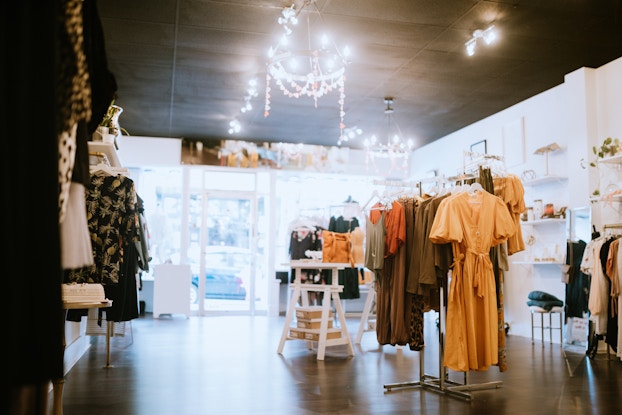
Why it matters:
- Brands increasingly need to connect with consumers on both a transactional and an emotional level.
- This can be achieved by connecting loyalty with shared values and by offering unique experiences that reflect a brand’s personality.
- Consumers appreciate rewards that are unique and exclusive to them, which is increasingly made possible through advanced technology.
Loyalty marketing is evolving beyond incentivizing consumers with points that they can cash in for free items or discounts. It is becoming more experiential, more closely tied to brand values, and, through advanced analytics, more personal.
During the past year, many brands were primarily focused on keeping customers engaged, even though their products might not have been as easily accessible due to pandemic-related restrictions, said Mary Pilecki, vice president and principal analyst at market research firm Forrester. Companies reached out to their customers with advice about coping with the pandemic, such as offering tips for safeguarding their personal health and supporting their mental well-being.

Interested in a small business membership?
Find out how the U.S. Chamber of Commerce can help your company grow and thrive in today's rapidly-evolving business environment. Connect with our team to learn how a small business membership can benefit your bottom line and help you achieve your goals.
“They were letting people know they cared about them, and customers appreciated that,” she said.
Now that commercial activities have been returning to normal, marketers are shifting their focus back to some of the key trends poised to drive successful loyalty marketing programs going forward, including tying loyalty to emotional connections and focusing on experiential rewards.
Consumers increasingly seek out brands that reflect their values
Consumers are more intent than ever on patronizing brands that share their values, Pilecki said. Forrester research shows that 60% of U.S. adults shopping online consider at least one of the following factors when they make a purchase:
- the brand’s reputation;
- the brand’s values;
- the environmental impact of the brand or the product, and
- the social impact of the brand or the product.
That pursuit has become “even more sophisticated during the pandemic,” said Pilecki, noting that consumers are now also seeking to align with companies that treat their employees well.
Along those same lines, consumers are also more interested than ever in supporting their local communities and in buying products that are locally manufactured, Pilecki said.
Going beyond the transactional by summoning — and measuring — ‘emotional loyalty’
Companies that excel at tying their values to their loyalty programs include beauty care retailer Sephora, which last year began allowing its Beauty Insider loyalty program members to use their accumulated rewards points to donate to the National Black Justice Coalition, she said. “They are living their brand values,” said Pilecki.
These types of efforts help strengthen consumers’ “emotional loyalty,” which can be difficult to quantify, but can be just as important as transactional loyalty measured by traditional metrics such as spending or purchase frequency, according to Pilecki. Companies are measuring emotional loyalty in several ways, including using basic customer satisfaction scores or Net Promoter Scores (NPS), and analyzing social media posts and customer browsing behavior.
Truly loyal customers will have both an emotional and a transactional connection to a brand, she explained.
Emotional loyalty data can be used to benchmark and track emotional attachment trends over time, for example. Negative trends might identify experiential issues, and positive trends might indicate opportunities to expand on those effective drivers, Pilecki said.
“It’s not as simple as doing something nice if the customer is unhappy,” said Pilecki. “It goes beyond that. It involves fine-tuning your offerings in ways that will improve the emotional status of the consumer.”
She cited Walmart’s new subscription membership program, Walmart+, as tapping into an emotional connection with its shoppers. The program is positioned around the concept of services—such as home delivery and the use of Scan & Go in the mobile app—that allow customers to spend more time with their families, she explained.
Gestures as simple as recognizing customer milestones, including birthdays and anniversaries, can go a long way in building emotional connections and loyalty, said Andy Rebhun, vice president of digital marketing at restaurant chain El Pollo Loco, in a recent webinar held by loyalty platform provider Punchh.
“The restaurant industry is a very competitive space, and you always want to give customers another reason to visit your establishment,” he said. “So, for us, it’s trying to be top of mind and making sure that connection is not just transactional,” so that the consumer forges a meaningful connection with the brand.
Consumers want to feel special. The data tells us that getting offers that are not available to the mass market is very important to them.Mary Pilecki, vice president and principal analyst, Forrester
The growth of experiential rewards
Another related trend in the loyalty space is the growth of experiential rewards, Pilecki said.
Companies that nail experience-driven loyalty perks include outdoor clothing and equipment retailer REI, which offers classes, events and adventures such as lessons in backcountry navigation and guided hikes up Mount Rainier, some of which are free and some of which may be offered at discounts to loyalty program members.
Amid the pandemic, Marriott’s Bonvoy loyalty platform during the past year has been offering virtual experiences, such a virtual tour of a winery in Tuscany and a virtual bike ride through a Dutch town, while offering in-person experiential rewards, such as a gondolier lesson in Venice.
Meanwhile, Pilecki also cited a Chase offer that allows members to skip the line to enjoy a breakfast at the Vatican, at a cost of either $121 or 8,000 reward points.
“Consumers want to feel special,” she said. “The data tells us that getting offers that are not available to the mass market is very important to them.”
Gary Hawkins, CEO of the Center for Advancing Retail & Technology, agreed that providing experiences should be a key element of marketers’ strategies going forward.
“Maybe it’s rewarding, recognizing their top shoppers with a private wine tasting with a vineyard, or gourmet cooking lessons. There’s no end to interesting and educational experiences marketers can provide,” he told CO—.
Hawkins also noted that customer recognition is important to loyalty program effectiveness and can actually be a more powerful motivator than financial incentives. This can include writing handwritten thank-you notes to customers during the holidays, for example, or doling our surprise rewards to top customers.
He cited as an example a private party he held for his top 100 shoppers when he operated Green Hills Farms Super Market.
“It generated unbelievable word of mouth for years,” he said.
As another example, Hawkins said one retailer he worked with, which operated about 400 franchised store locations, had each store owner hand-deliver a bouquet of roses to their top 10 customers on Valentine’s Day.
Tapping tech to seamlessly integrate loyalty programs and online shopping
Hawkins noted that the pandemic “served as a real-world stress test for retailers’ e-commerce systems,” and one of the areas that came up short was the inadequate integration of loyalty programs with online shopping. Retailers have since been focused on more fully integrating their loyalty capabilities into their e-commerce and digital ecosystems, he said.
“We are also seeing loyalty being leveraged into building longer-lasting e-commerce relationships, leveraging earning and redeeming rewards as part of subscription and replenishment programs, and membership-type plans similar to Amazon’s Prime program,” Hawkins said.
He cited grocery retailer Hy-Vee as an example of a retailer that offers e-commerce benefits through its $99 annual membership program. Subscribers receive free delivery, two-hour pickup and other loyalty perks.
Delivering consumers contextually relevant offers based on real-time factors from weather to location
Marketers have also become much more sophisticated in their use of data analytics and artificial intelligence (AI) in their loyalty programs.
Hawkins cited grocery retailer Weis Markets, for example, which uses AI technology to automate its loyalty marketing. Via AI and machine learning, the grocer selects specific shoppers who should be targeted, and then automatically recommends a specific strategy for each individual customer and automates recommended promotions and pricing.
Weis is leveraging the technology to understand which promotions and prices to use for certain customer segments, and then automating the campaigns, he explained.
Pilecki pointed out that digital loyalty programs are also approaching a point where a specific offer can be tailored not only to a particular customer, but also to variables such as where that customer is at the exact moment the offer is viewed, or the weather at that particular location.
Even though a brand might send a promotion in the afternoon, for example, a customer opening the offer via email or text later that evening might see a different offer than what was delivered had they opened it earlier, based on their location or other factors.
“The technology exists to do this today, but it’s still a challenge for many, many brands,” said Pilecki.
CO— aims to bring you inspiration from leading respected experts. However, before making any business decision, you should consult a professional who can advise you based on your individual situation.
Follow us on Instagram for more expert tips & business owners stories.
CO—is committed to helping you start, run and grow your small business. Learn more about the benefits of small business membership in the U.S. Chamber of Commerce, here.







